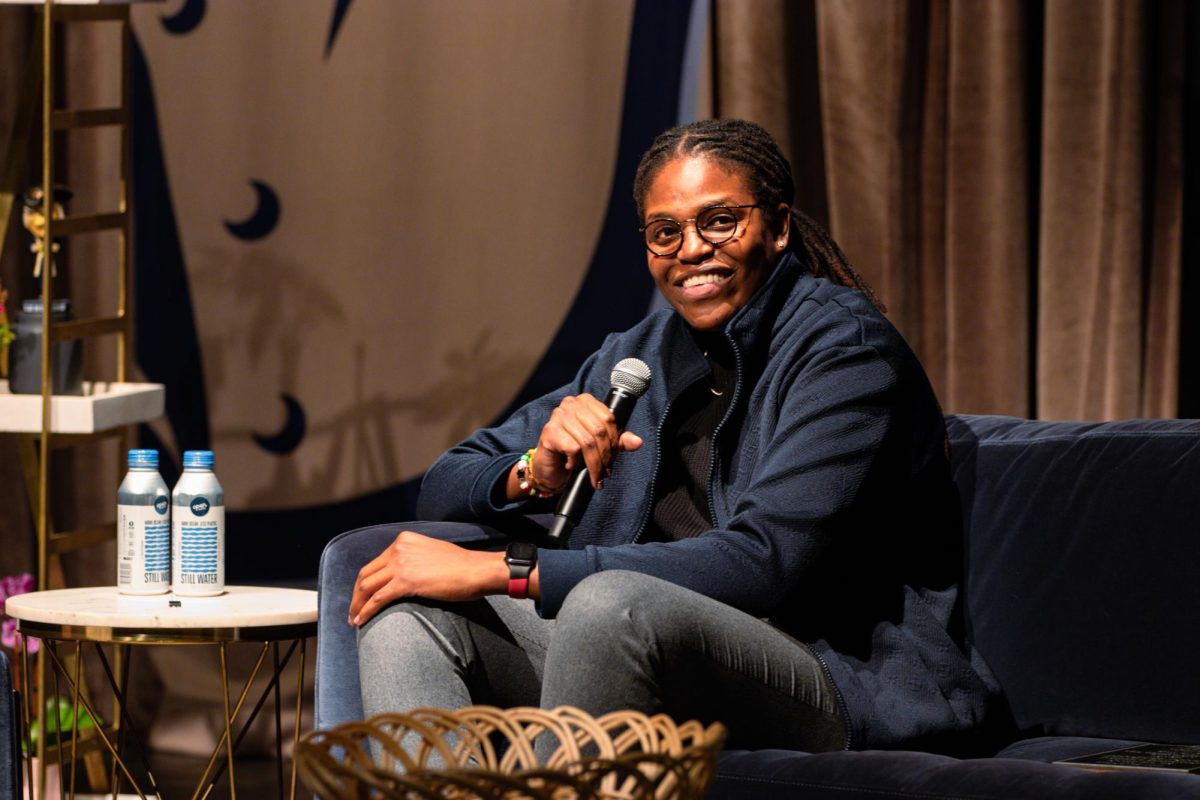Female GW administrators said several factors contribute to the low number of female administrators and faculty at GW.
Grae Baxter, executive dean of Mount Vernon Campus, said fewer women are employed in higher education because of personal factors.
There are women who legitimately make different career choices, said Baxter, who took a few years off from work to watch her young children. There are women, for example, who like working part-time because they have children at home. I think it’s wonderful that if they want they have the option to work part-time.
Women, despite some changes, are still the primary nurturers and caregivers, said Iris Molotsky, spokeswoman for the American Association of University Professors. Women take on more family obligations taking care of children and older relatives at the time they would normally start more research and publishing – important considerations for hiring and promotions, she said.
If women take time off, it sets them back on experience and tenure, which are important factors in promotion as well, Molotsky said. I don’t totally discount that there are remnants of discrimination either.
Baxter said she has been successful partly because of the impressive track record she established before and after she left work to care for her children.
Baxter has two children, a 20-year-old daughter, who is a junior at Columbia University, and a 17-year-old son, who is a high school junior.
I personally have really always been encouraged and trusted with important responsibilities since I’ve been back full-time, Baxter said. I’ve been allowed to grow and perform in a way that I can. That’s absolutely true of my experience at GW, for which I’m very grateful.
Baxter said she knows professional women at other universities who have not been afforded the same kinds of opportunities.
I do know that there are other women, some who’ve been friends of mine, who’ve not had that same level of encouragement, who’ve not been given the same level of trust, Baxter said. And some are not hired or promoted because of that.
Bernice Sandler, senior scholar at the Women’s Research and Education Institute, said she believes blatant discrimination is still a reason why so few women rank high among the nation’s university faculties and administrations.
There are still search committees for presidents that say their institution `isn’t ready for a woman,’ Sandler said.
Sandler also blamed the disparity on what she termed the clone factor.
In 1995, women represented 16 percent of leaders of colleges and universities – an 11 percent jump nationwide since 1975, according to the American Council on Education
Ruth Simmons, president of Smith College in Northampton, Mass., was named president-elect of Brown University in October, making her the second female and first African American to serve as president of an Ivy League institution.
The University of Pennsylvania has the other female president, Judith Rodin.
Most of us are comfortable with clones of ourselves and are less comfortable with people who seem different, Sandler said. Thus many men are more comfortable with men and many women more comfortable with women. With many more men in leadership and administrative positions, they are simply not as comfortable with women and would prefer to hire people more like themselves.
She said a school’s recruitment methods indicate how dedicated the university is to recruiting women.
Take women’s colleges as an example, Sandler said. They have somehow managed to find women who are qualified to be presidents, deans, vice presidents, heads of math departments and so on. Somehow these women are not easily found by co-ed institutions.
The most recently appointed vice president within GW’s administration, Vice President of Communications Mike Freedman, was appointed last summer.
Linda Donnels, dean of students, said while corporations are more in the public eye for gender achievements, colleges and universities have made similar accomplishments.
In my career, I’ve seen some real changes, Donnels said.
Annie Wooldridge, assistant vice president for faculty recruitment and personnel relations, said the slow ascension of women up the ranks of GW’s administration results from the structure of academic organizations, the scarcity of available positions and the lengthy tenure of individuals holding senior positions.
You need to look at the organizational structure of an academic organization, Wooldridge said. Literally the higher you go here, the fewer positions are available. I know from discussions with the president that he is concerned about the division of his senior staff, particularly the lack of a woman vice president.
Susan M. Phillips, dean of the School of Business and Public Management, agreed that the pipeline for faculty positions will expand as more and more women receive their doctorate degrees. In 1973, Phillips was the only woman in the country to graduate with a doctorate in finance, she said.
Linda Salamon, presently an English professor, held the position of interim vice president for academic affairs until Don Lehman replaced her after a nationwide search, said Wooldridge.
Salamon was dean of the Colombian School of Arts and Sciences before she became interim vice president.
While it concerns some women faculty that the interim vice president for academic affairs was replaced by (Lehman), following a national search, we have not had a woman vice president, Wooldridge said. I know for a fact that the president has endeavored to address the issue.
Lehman could not be reached for comment.
We can never do enough, Wooldridge said We need to do more to make our actions mirror our rhetoric.-Tim Donnelly contributed to this report.






